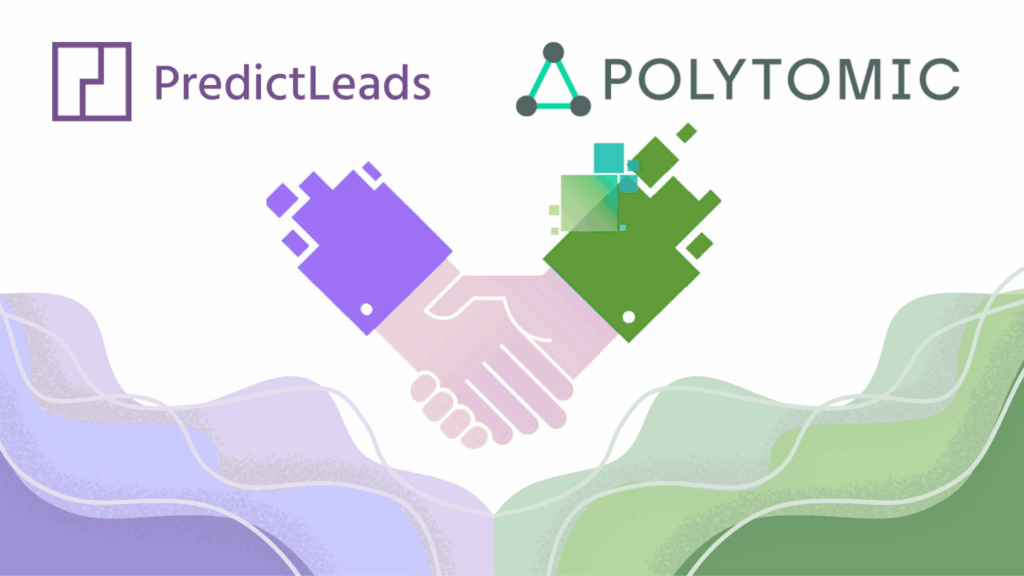In 2012, Stripe was just a little payments API that almost nobody outside of Silicon Valley had heard of.
By 2021, it was worth $95 billion.
The uncomfortable truth is the signals that Stripe was going to be huge were visible years before the big headlines hit. Most people just weren’t looking for that crucial early-stage investment signals (or didn’t know where to look).
That’s the edge today’s smartest investors are chasing: finding billion-dollar companies before they look like billion-dollar companies. And it starts with something almost no one talks about. The right blend of News and Connections data.
The Secret’s in the Signals
At PredictLeads, we monitor more than 20 million news sources and close to 100 million companies worldwide, capturing early-stage investment signals in a company’s journey. Spaning from funding rounds and product launches to strategic partnerships, hiring surges, and market expansions.
But we don’t stop at just the news.
Our Connections dataset maps the business relationships that reveal how a company is truly positioning itself in the market – from product integrations and investor ties to vendor agreements and partnerships with industry leaders. This is done by scaning company websites for partner and customer logos, using our image recognition system to match each logo to a verified domain. We also analyze case study pages, testimonials, and “Our Customers” sections to uncover customers, partners, vendors, and investors that often go unreported in press releases or traditional news.
Each connection is a signal of strategic intent: integrations hint at ecosystem alignment, investor relationships point to future funding potential, and vendor or partner deals often precede market entry or expansion. When combined with our other datasets, these connections turn scattered updates into a clear, data-backed narrative of growth — and within that narrative is where the next unicorn often emerges.
The Pattern Every Investor Dreams Of
Picture this:
January > a startup raises a modest $8M Series A.
February > they integrate with Stripe’s API.
March > our company data shows a vendor relationship with Shopify.
April > they expand into London and start hiring engineers at double the previous rate.
If you’re only reading headlines, you’ll miss the story.
If you’re tracking news events and company connections in real time, you’ll see it months before the rest of the market and you’ll be in the room when the deal is still hot.
Why Public Headlines Are Too Late
By the time TechCrunch reports a $100M Series C, the race is already crowded and you’re not ahead of the game, you’re simply keeping pace with everyone else.
To spot opportunities earlier, you need to look where others aren’t. News data reveals unannounced or smaller funding rounds — early startup investment signals that indicates momentum gain. Connections data uncovers the strategic moves behind that momentum, from product integrations and new partnerships to key customer wins and vendor relationships.
Overlay these signals, and you will not wait for the news — you’ll see them coming. The result is an early warning system for hypergrowth, giving you a competitive edge long before the headlines hit.
The Future of Investment Intelligence
In the next five years, the biggest wins in venture won’t go to the investors with the most meetings — they’ll go to the ones who can see conviction in the data before the rest of the market believes it.
The edge won’t come from chasing every funding headline, but from quietly tracking the early indicators of momentum: a new integration with a market leader, a sudden hiring surge in engineering, an unexpected expansion into a high-growth region.
When you can spot these early-stage investment signals as they happen — and connect them into a bigger story — you stop reacting to the market and start anticipating it. Finding the next unicorn and its startup investment signals isn’t about luck; it’s about reading the signals early enough to act, while the opportunity is still invisible to everyone else.
If you’re ready to see what those whispers sound like, let’s talk.



